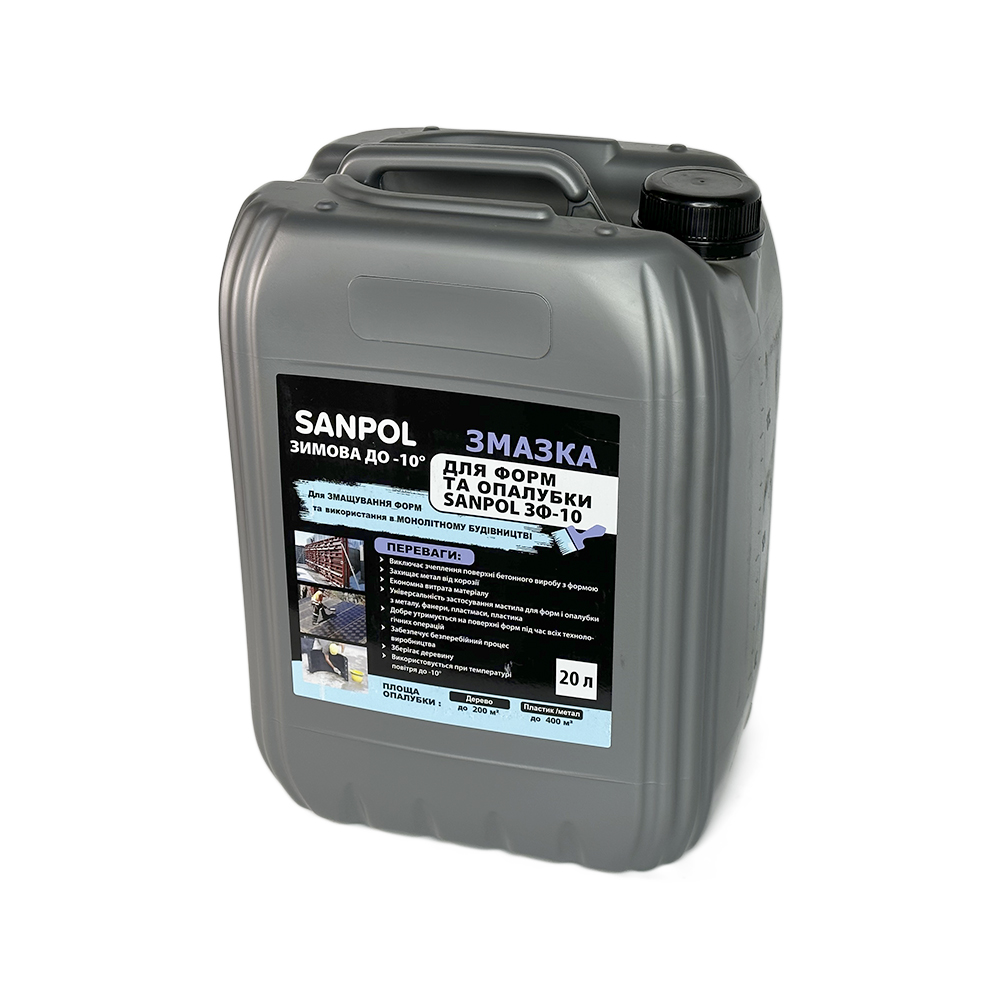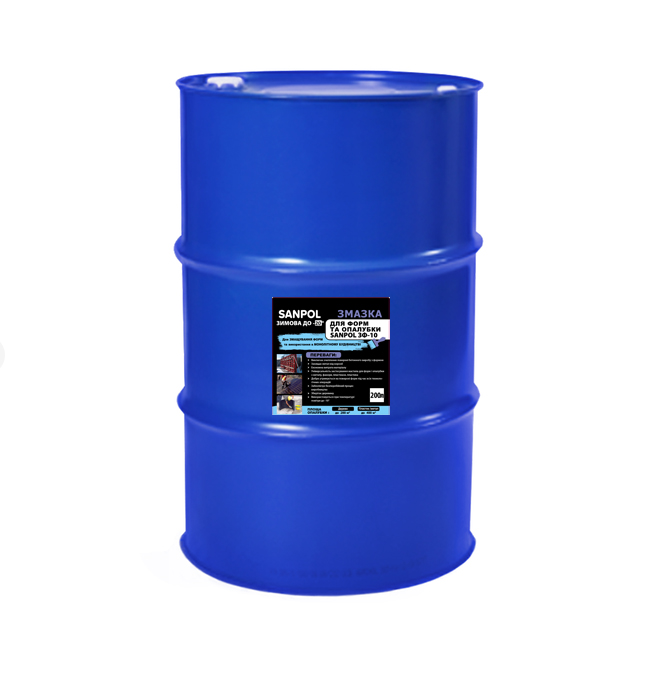In winter, many construction projects face unpleasant problems associated with low temperatures. One of these problems is the freezing of the formwork, a structure used to form concrete structures. To avoid problems with the formwork in winter, a special winter lubricant is used. Formwork is an integral part of monolithic and industrial construction, allowing you to create various shapes and structures made of concrete. However, the formwork is often exposed to low temperatures in winter, which leads to its freezing and supercooling of concrete. This can lead to deformation and damage to concrete structures, as well as deterioration in the quality of work. Winter formwork lubricant is used to solve this problem. This is a special lubricant that is applied to the surface of the formwork before pouring concrete. Winter lubricant has a low pour point and prevents the formwork from freezing at low temperatures. It also facilitates the disassembly of the formwork after pouring concrete, speeds up the construction process and improves the quality of work. The use of winter lubrication for formwork has several advantages. Firstly, it prevents concrete from freezing in the formwork, which increases its strength and durability. Secondly, the lubricant improves the optimal distribution of the concrete mix, reducing the risk of cavities and porosity in the structure. This is especially important at low temperatures, when concrete becomes more susceptible to moisture and problems with its freezing may occur. It is important to note that the choice and application of winter lubricants must meet the requirements and standards in the construction industry. When choosing a lubricant, factors such as ambient temperature, humidity, type of formwork and working conditions must be taken into account. To do this, it is recommended to contact experts such as the Protek-S company, specializing in the supply of modern materials for monolithic and industrial construction. In conclusion, winter formwork lubricant is a necessary tool when working with formwork in subzero temperatures. It prevents the formwork from freezing, ensures high-quality concrete pouring and speeds up the construction process. When choosing a lubricant, it is necessary to contact experts and take into account the requirements and standards in the construction industry. This is the only way to guarantee the safety, reliability and durability of building structures in winter.
Winter lubricant for molds and formwork ZF-10 is used in industry in the production of concrete products, as well as in monolithic construction. Its composition provides excellent separation properties and anti-corrosion protection. ZF-10 does not have an aggressive effect on varnish, plywood, plastics and metal, has performed well on vertical and horizontal surfaces of molds, does not drain under the influence of vibration and concrete mixture. The concrete surface of the product without excessive pre-finishing is ready for the application of paintwork, plaster or adhesives. The use of ZF-10 can significantly improve the quality of concrete, foam concrete and aerated concrete products, can be used in technological steaming conditions at high temperatures up to 800C, and is used ready-made. it mixes with water to form a time-stable emulsion.
The main advantages of using lubricants for formwork:
- low price compared to other manufacturers
- economical material consumption
- versatility of application of lubricants for molds and formwork made of metal, plywood, plastic
- it holds well on the surface of the molds during all technological operations
- ensures a smooth production process
- it completely eliminates the adhesion of the surface of the concrete product to the mold
- does not spoil the appearance of products
- suitable for white architectural concrete
- it does not affect the timing and intensity of concrete hardening
Main Features:
- protects metal from corrosion
- preserves wood
- suitable for use at preheated temperatures up to 80 °C.
- it is safe for human health



